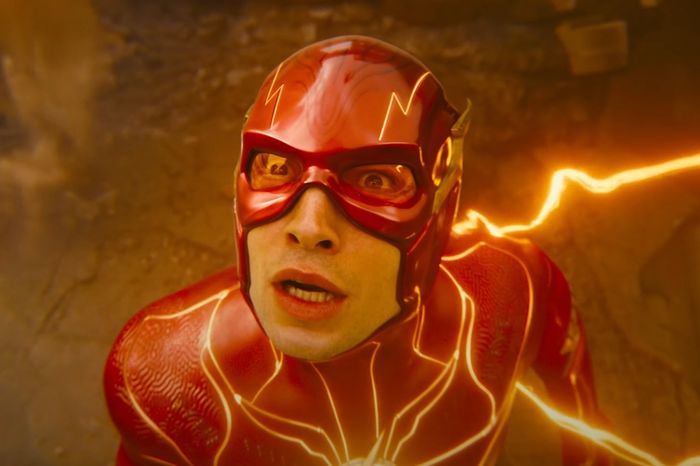
This piece was originally published in June. We are recirculating it now timed to The Flash’s streaming debut on HBO Max. Also, a warning: spoilers ahead!
It’s not wrong to describe The Flash as an origin story. While the movie, directed by Andy Muschietti, opens with Barry Allen (Ezra Miller) as a full-fledged Justice League member alongside Batman and Wonder Woman, its time-traveling premise sends Barry back to revisit the events that created his alter ego. But for all the literal retreading of his backstory, there is one unresolved matter that haunts The Flash even after the credits roll: Who killed Barry’s mother, Nora Allen?
Here’s everything we know about the murder, based on the film: Nora Allen, played by Maribel Verdú, is stabbed with a knife in her kitchen without any witnesses present. Barry was a child, up in his room at the time, while his father Henry (Ron Livingston) was picking up groceries at the supermarket. After Henry returns home, Nora dies, and Henry is implicated as a suspect and eventually hauled off to prison. The identity of the killer is never determined. Bizarrely, The Flash barely acknowledges this lingering mystery, speeding past it in favor of Barry’s plan to manipulate the timeline and prevent Nora’s death entirely.
There’s always the chance that Muschietti, screenwriter Christina Hodson, and credited story artists Joby Harold, John Francis Daley, and Jonathan Goldstein are saving the answer for a sequel — if Miller’s version of the Flash isn’t rebooted out of James Gunn’s soon-to-be-remolded DC Extended Universe. But the comics do identify one major culprit.
The Flash takes primary inspiration from three DC Comics titles: The Flash: Rebirth (2009) and Flashpoint (2011), both by writer Geoff Johns, and more loosely The Button, a 2017 crossover miniseries between Joshua Williamson’s The Flash and Tom King’s Batman. Like the movie, the comics tell of Barry using his powers to “run” back in time to change his own history. But they also identify Nora’s assailant as Barry’s greatest arch-nemesis: Eobard Thawne, a.k.a. the Reverse-Flash.
First introduced in comics in 1963, Eobard is a scientist who idolizes the Flash so much that he replicates the circumstances that gave Barry his superpowers and becomes a speedster himself. But when Eobard learns he’s meant to become the Flash’s enemy — and die by his hands! — he goes bananas, embarking on a petty and vengeful quest to ruin the Flash’s life. This includes going back in time to kill Barry’s mother, and targeting his beloved wife Iris. In Flashpoint, Barry undoes Eobard’s meddling but alters the entire DC universe in the process: Superman’s existence is erased, Bruce Wayne’s father becomes Batman, and a catastrophic war breaks out between Atlantis and Themyscira.
In The Flash, Bruce Wayne (played by Ben Affleck, for now) warns Barry that any change in history can lead to dire consequences. And indeed, Barry finds himself in an unrecognizable new reality after messing with his timeline — one where Batman looks like Michael Keaton, not Affleck. Long story short, after Barry nearly implodes all of time and space, The Flash ends with a far simpler solution for Henry’s wrongful imprisonment: Barry tricks Henry into getting himself identified by supermarket security cameras, thus backing up his alibi with video proof. But that doesn’t solve the question of who Nora’s killer is.
At this point, with the DC cinematic franchise on the brink of reboot, it’s uncertain whether Eobard will ever make his big-screen debut opposite Miller’s Flash — though after the film’s dismal opening weekend at the box office, it isn’t looking especially likely. Will the murderer’s identity remain a mystery even three Batmans can’t solve? Maybe the Flash can run into the future just this once and find out.
More on The Flash
- All 43 Live-Action DC Comics Shows, Ranked
- The Complete History of Ezra Miller’s Controversial Career
- Tim Burton Is in a ‘Quiet Revolt’ Over a Cameo in The Flash

